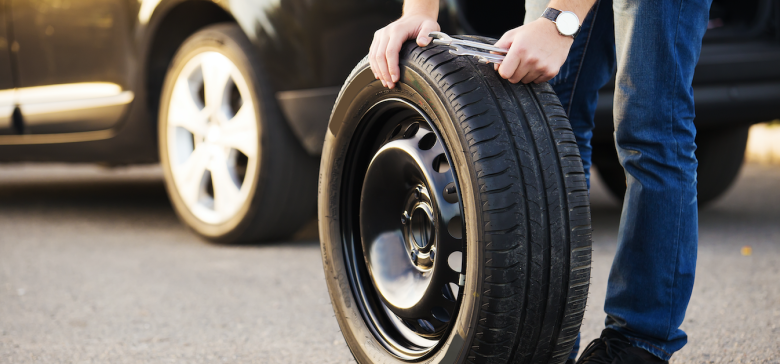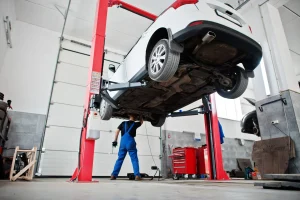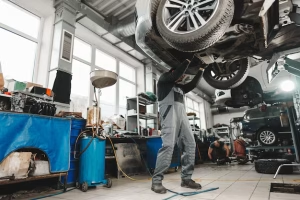Car repairs can be a significant expense for many vehicle owners, especially when minor issues are left unresolved and escalate into larger, more costly problems. However, with a little knowledge and the right approach, DIY car repair can help you save big on both labor and parts. Whether you’re dealing with routine maintenance or more specific repairs, taking a hands-on approach to car care not only cuts costs but also gives you the confidence to handle common issues without a trip to the mechanic. This article provides expert advice on how to save money and improve your car’s performance through DIY car repairs.
Why DIY Car Repair Is a Smart Choice
The primary reason many car owners opt for DIY repairs is the potential for significant cost savings. Mechanics charge high hourly rates for their labor, and parts can be marked up considerably when purchased through a shop. By learning how to perform repairs yourself, you eliminate the need to pay for these services. Additionally, performing basic repairs and maintenance tasks on your own can extend the life of your vehicle, preventing costly breakdowns and major repairs.
Another advantage is the ability to maintain your vehicle on your schedule. Instead of waiting for an appointment at the mechanic’s, you can address issues as soon as they arise, reducing the risk of further damage. Whether it’s changing the oil, replacing air filters, or swapping out brake pads, small maintenance tasks can prevent larger, more expensive problems in the future.
Basic Tools You Need for DIY Car Repairs
Having the right tools is essential for successful DIY car repairs. While you don’t need an entire garage full of equipment, there are several basic tools that every car owner should have on hand. These tools will help you handle most repairs and maintenance tasks efficiently and safely.
Essential tools include:
- Socket Set: A variety of socket sizes will be necessary for loosening and tightening bolts during many repairs.
- Wrenches: Both adjustable and combination wrenches are crucial for working with nuts and bolts.
- Screwdrivers: A good set of screwdrivers (flathead and Phillips) is essential for many small repairs.
- Tire Iron & Jack: These are necessary for changing tires and performing maintenance tasks that require lifting the car.
- Torque Wrench: This is useful for ensuring that bolts are tightened to the manufacturer’s specifications.
- Oil Filter Wrench: For changing your vehicle’s oil and replacing the filter.
- Multimeter: This tool helps you check electrical systems, such as the battery or alternator.
Investing in high-quality, durable tools ensures that your DIY repairs are done safely and correctly, reducing the risk of making costly mistakes.
Common DIY Car Repairs That Save You Money
Many car owners are unaware that they can perform simple repairs at home without needing to visit a mechanic. Here are some common repairs and maintenance tasks that can save you money:
1. Changing the Oil
One of the easiest and most essential car maintenance tasks is changing the oil. Regular oil changes ensure that your engine runs smoothly and lasts longer. Performing this maintenance yourself can save you upwards of $50-$100 per visit to a shop. The process involves draining the old oil, replacing the filter, and refilling with fresh oil. With the right tools, you can complete this task in under an hour.
2. Replacing Air Filters
A clogged air filter reduces engine efficiency and fuel economy. Fortunately, replacing the air filter is an incredibly simple task that doesn’t require specialized skills or equipment. In most cases, you can replace the filter in less than 15 minutes, and the cost of the filter is relatively low. This is an excellent task for beginners looking to start DIY repairs.
3. Changing Spark Plugs
Spark plugs are responsible for igniting the air-fuel mixture in the engine. Over time, they can become worn out, leading to poor engine performance and reduced fuel efficiency. Replacing spark plugs is a straightforward job that requires a spark plug socket and torque wrench. This repair can be done in under an hour and can significantly improve engine performance.
4. Replacing Brake Pads
Brake pads wear out over time and need to be replaced for optimal safety and performance. Replacing brake pads is a more involved repair, but it’s still within the capabilities of most DIY enthusiasts. The cost of replacement pads is typically much lower than the price of having a mechanic perform the service, and with some basic instructions, you can perform the job yourself.
5. Changing the Battery
If your car’s battery is showing signs of failure (difficulty starting, dim lights), you may need a replacement. Changing the car battery is a relatively simple repair that requires only a wrench and basic safety precautions. This task can be done in about 30 minutes, saving you from the high costs of a mechanic’s labor.
6. Replacing Wiper Blades
Wiper blades are a safety feature that should be replaced regularly. Worn-out blades leave streaks and reduce visibility, especially in wet conditions. Fortunately, replacing wiper blades is a quick, easy fix that anyone can do in under 10 minutes. The cost of replacement blades is also quite affordable, making this a great DIY repair for anyone looking to save money.
7. Fixing Minor Dents and Scratches
If your car has minor dents or scratches, you can use DIY methods to fix them. There are several dent removal kits available that can help you pop out small dings, and touch-up paint can be applied to scratches. These fixes are inexpensive and will restore your car’s appearance without the need for costly professional bodywork.
How to Avoid Making Costly Mistakes
While DIY car repair can save you money, it’s essential to approach it with caution to avoid mistakes that could lead to further damage or injury. Here are some tips to help you stay on track:
- Do Your Research: Before attempting any repair, research the specific steps and gather all necessary tools. Online guides and video tutorials are invaluable for beginners.
- Follow the Manual: Always refer to your vehicle’s owner’s manual for specific instructions, such as recommended fluid types or torque specifications.
- Start Small: If you’re new to car repair, begin with simple tasks like changing the oil or replacing wiper blades. Gradually build your skills before attempting more complex repairs.
- Safety First: Always prioritize safety by using the proper tools and equipment. Wear gloves, safety goggles, and appropriate clothing to protect yourself from injuries.
Conclusion
DIY car repair is a rewarding way to save money and gain valuable skills. With the right tools, knowledge, and preparation, you can handle a wide range of repairs and maintenance tasks that will keep your car running smoothly and extend its lifespan. From simple fixes like changing the oil to more involved repairs like replacing brake pads, taking a hands-on approach to car care can save you hundreds or even thousands of dollars over time. Start small, do your research, and embrace the satisfaction of maintaining your car on your own terms. With these expert tips, you’ll be well on your way to becoming a DIY car repair pro.



